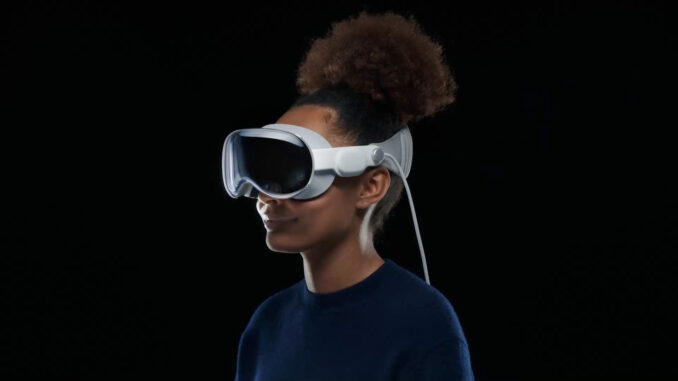
The world of marketing is no stranger to the transformative power of generative AI. And with the introduction of the Apple Vision Pro, we find ourselves contemplating the potential implications this could have on marketing.
Apple claims to be ushering in the era of spatial computing but, beyond the usual hype commotion, it does feel like this could lead to significant second-order effects on digital marketing and digital experiences.
(Just in case we didn’t have enough disruption..)
Could ad spaces transform?
The Apple Vision Pro creates a new platform for apps and digital content, blending digital content with the user’s physical space. If these products enter the home and workplace as planned, traditional screen-based ads may become less effective as users engage with spatial computing.
Could this lead to a complete transformation of advertising? Could this lead to a new era of immersive, 3D ads that blend naturally with the user’s environment?
Generative AI could play a pivotal role here, creating ads that adapt to the user’s environment in real-time for a highly personalised and engaging experience specifically designed, in real-time, to adapt to the user’s specific unique situation.
However, whether these devices gain enough traction to actually disrupt “traditional” digital media is a big if; as Google Glass and Meta can attest, people are less than enthusiastic about wearing giant plastic masks for more than a few minutes at a time.
Will this new technology eventually become as seamless as a watch or mobile phone?
Spatial design and user interaction
The Apple Vision Pro allows users to control the device using their eyes, hands and voice. This intuitive form of interaction could lead to a shift in how users interact with digital content, in the same way that the iPhone changed the dominant mouse and keyboard combo and forced a huge change in the way websites, navigation and other experiences were designed: if it works, if could lead to a huge transformation in how interfaces are used.
Shifts in content consumption
Augmented Reality (part of the technology offered by the Vision Pro) can transform any room into a personal theatre, changing how users consume entertainment content. Could this lead to a shift in peak usage times and preferred content formats, affecting when and how marketers reach their audience?
For example, extreme wide angle content, immersive sound or even 3D experiences could create new opportunities for creators, away from restrictive, small devices with limited rectangular aspect ratios.
The future is not written
Contrary to what the incessant AI influencers would have you believe, the future is not yet written. ChatGPT won’t kill Google. The real answer is that we simply don’t know and everything is speculative.
Whether VR or AR devices are a success remains to be seen: Google’s failed attempt at this 10 years ago with Google Glass remains a landmark moment in the pitfalls of innovation. People have shown a remarkable resistance to wearing devices for long periods of time and Apple’s real test will be their ability to overcome this resistance.
However, we do know one thing: rarely does Apple enter a market with this much fanfare and fail. And, with the iOS ecosystem and media services built around it, the Vision Pro has a real shot at succeeding where competitors failed.
This post was researched and created with the help of AI
The post Exploring the potential impact of Apple Vision Pro: predictions for the future of digital marketing appeared first on Hallam.

Leave a Reply